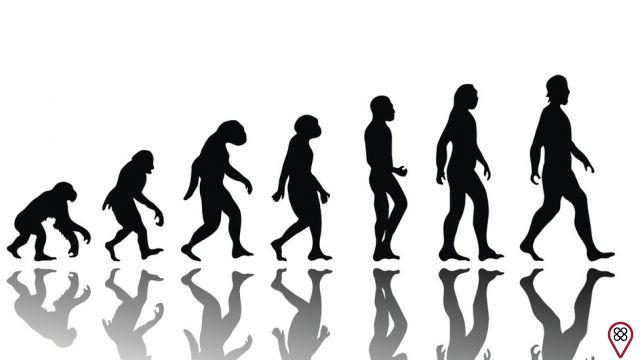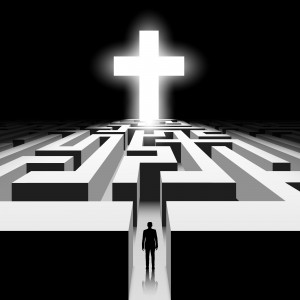In a few words, theophany is a manifestation of God in a visible way and captured by the senses of the human being. It is when God appears in His glory to man, even if through another organism.
This word has Greek origins and comes from the junction of two terms: “theos”, which means “God” and “phainein”, which refers to the verbs “to show” or “to manifest”. The agglutination of the two terms and their consequent adaptation to the Portuguese language gives rise to the meaning “manifestation of God”.
Theophany in the Bible
Theophany in the Old Testament
Theophanies were very common in the Old Testament, when God often revealed himself temporarily, usually to give someone a relevant message. Here are some times when God appeared in the first part of the Holy Book:
to Abraham in Shechem
The book of Genesis reports that God was always in contact with Abraham, communicating with him throughout his life, but only on a few occasions did God show himself in a visible way.
The first of these appearances is reported in Genesis 12:6-7, which describes that God appeared to Abraham and said, “To your seed will I give this land,” referring to the land of Canaan. No details of how God appeared to his servant are given in the passage, except that it must have been very impressive, since the book records that Abraham built a temple for the Lord there.

To Abraham, announcing the fall of Sodom and Gomorrah
When Abraham was 99 years old and living in Canaan, he once received three men who were passing by in his tent. As Abraham ate lunch with them, he heard the voice of the Lord say that he would have a son.
When the meal was over, the three men got up to leave and Abraham followed. According to Genesis 18:20-22, two of the men went towards the city of Sodom, while the third remained and announced, in the first person, that he would destroy the cities of Sodom and Gomorrah, which suggests that this man was probably a manifestation direct from God.
To Moses on Mount Sinai
Moses is considered the man who had the most intimacy with God, since the Lord always talked to his servant, who guided the Israelites through the desert towards the promised land.
Many people tend to think that God manifested himself when Moses talked to a burning bush, but the Bible implies that the bush was on fire, but it was an angel who was communicating with Moses, not God himself.
In Exodus 19:18-19, however, God decides to speak directly with Moses and descends on Mount Sinai, surrounded by a dense cloud, with lightning, thunder, fire, smoke and the sound of a trumpet. All the people of Israel saw this phenomenon, but only Moses was called to the Lord, who gave him, at that moment, the laws of Israel and the Ten Commandments.
After a dialogue that lasted for days, Moses asked God that he might see His glory, but the Lord refused, arguing that His face would kill any mortal, but allowed Moses to see his back (Exodus 33:18-23), marveling him.
To the Israelites in the desert
The book of Exodus also reports that when the Israelites built the tabernacle in the desert, God descended on it like a cloud that never disappeared and served as a guide to the people in the desert, as the people followed the movement of the cloud and when it descended , set up a new camp in the place indicated by her during the 40 years they spent in the desert.
To Elijah, do not mount Horebe
Pursued by Queen Jezebel after confronting the prophets of the god Baal, Elijah fled into the desert and climbed Mount Horeb, where God warned him that he would appear to talk. Verses from 1 Kings 19:11-13 relate that Elijah waited hidden in a cave and heard and saw a very strong wind, an earthquake and then fire, after which the Lord appeared before him on a gentle breeze and reassured him about the your fears. The verses do not talk about how Elijah reacted to seeing himself before God.

To Isaiah and Ezekiel, in visions
Isaiah and Ezekiel were two prophets who could see the glory of God in visions promoted by the Lord, which are reported in Isaiah 6:1 and Ezekiel 1:26-28. Isaiah, for example, reported that he saw “the Lord sitting on a throne, high and lifted up, and the hem of his garment filled the temple.” Ezekiel wrote, “Right on high – on the throne – there was a figure that looked like a man. I saw that the top of what appeared to be his waist looked like shiny metal, as if it were filled with fire, and the bottom looked like fire; and a bright light surrounded him.”
Theophany in the New Testament
Jesus Christ
The greatest theophany in the New Testament is the coming of Jesus Christ to earth. As Jesus, God and the Holy Spirit are one, in a Trinity, the coming of the Christ can be considered an appearance of God to men. Jesus stayed on Earth for 33 years, preaching the good news of the Gospel and words of love. Another theophany is reported when Christ, after being crucified, rises and returns from the dead to speak with his apostles and followers.
And Saul
Soon after Christ's death, his followers began to be persecuted. One of the promoters of this persecution was the Jew Saul of Tarsus. One day, when he was traveling from Jerusalem to Damascus, intending to continue his persecution of Christians, Saul saw a very strong light and then a vision of Jesus, who rebuked him for persecuting Christians, as reported in the book of Acts. from the Apostles 9:3-5: “Saul asked, 'Who are you, Lord?' He replied, 'I am Jesus, whom you are persecuting.'
After this vision, Saul converted to Christianity, changed his name to Paul and began to preach the Gospel, being one of its greatest disseminators and author of much of the New Testament books, spreading the word of Christ throughout the world.
You may also like
- Discover yourself: the source is within you!
- Reflect on the possible (and probable) existence of other distant worlds!
- Discover the philosophical teachings of Kabbalah and transform your life for the better!
To John, on the island of Patmos
John, one of Christ's apostles, was arrested and isolated on the island of Patmos for preaching the Gospel. While there, John had a vision in which Christ came to him, reported in Revelation 1:13-16: “His head and hair were white as wool, as white as snow, and his eyes were like a flame of fire. . His feet were like bronze in a fiery furnace and his voice like the sound of many waters. He had in his right hand seven stars, and out of his mouth came a sharp two-edged sword. His face was like the sun when it shines in all its fury.”
At that moment, Jesus allowed John to see the end of time and commanded him to write about the apocalypse, with the aim of preparing Christians for his second coming, on the day of judgment.

But has anyone really seen God?
Some theologians preach that whenever God has shown himself to man, he has shown a manifestation of his power, never his true appearance, which would be impossible for man to see. John, for example, wrote that “no one has seen God at any time” (John 1:14), while Paul wrote that Jesus is the manifestation “of the invisible God” (Colossians 1:15). Finally, Jesus Christ Himself emphatically declared, as recorded in John 14:9, "Whoever has seen Me has seen the Father," so it matters little, according to some theologians, whether God has really appeared in all His splendor to man, for what what matters is that we feel His existence within us.

























